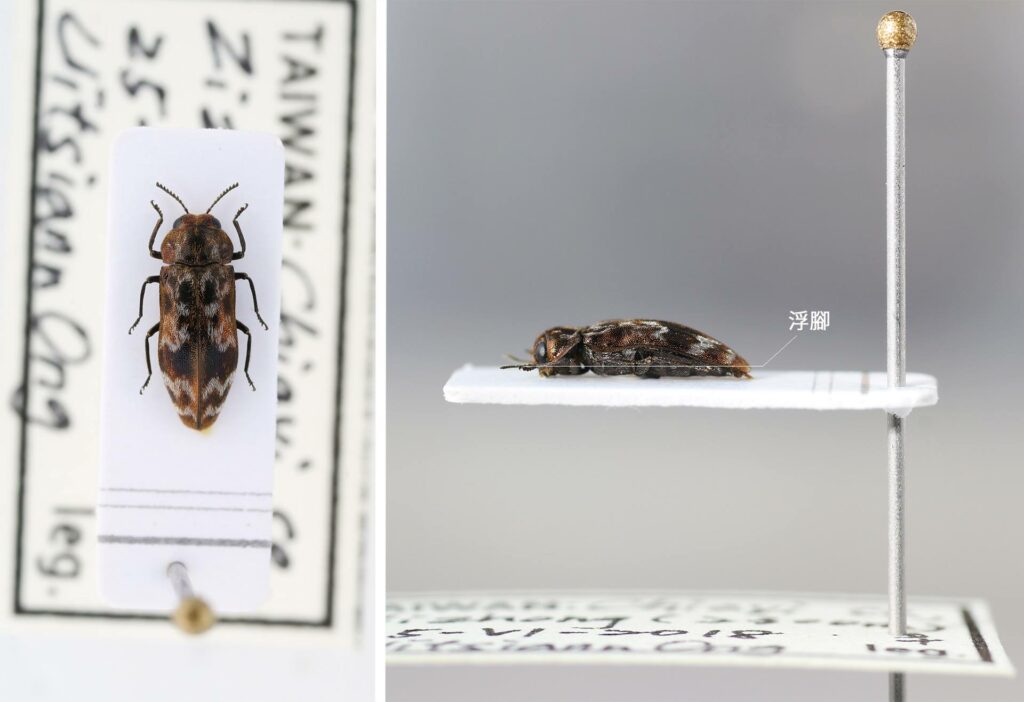
It’s all about getting perfect images.
We put our best effort in preparing specimens in order to get the clearest photos. We used a macro photograph technique called Focus Stacking. It took at least 1000 shutters to photo a species – that meant getting at least 100,000 photos for the 105 species (excluding the ones that failed). No doubt it was a huge project.
As for the making of specimens, we adopted the point mounting method. This technique allowed the tibiae of the six legs to float at the same level of height. The smaller a beetle was, the harder it got to make the specimens with this technique. The smallest beetle we included in this guide is Trachys formosana. It was about 2.4mm long, and the challenge was immersive for us.
Frustration was inevitable. We broke one or two rare beetles while making the specimens (breaking a beetle was not uncommon). For the sake of making a completed guideline, we tried our best to collect new beetles for photographing. In the end, we had to remove some species from this volume, because we didn’t have enough knowledge of their habits that can potentially enable us to find theses beetle. To our very wish, we hoped to have these missing species in volume 2.
This photo is the Coraebus komiyai. It’s about 6mm long. It’s not included in Jewel Beetles of Taiwan vol.1, because we couldn’t find the male beetle. We are looking forward to having it in volume 2. This picture also illustrates how mounting method works.
Please check out our new book “Jewel Beetles of Taiwan vol.1” if you like beetles too.
Copyright © 2019 Ministry of Beetles